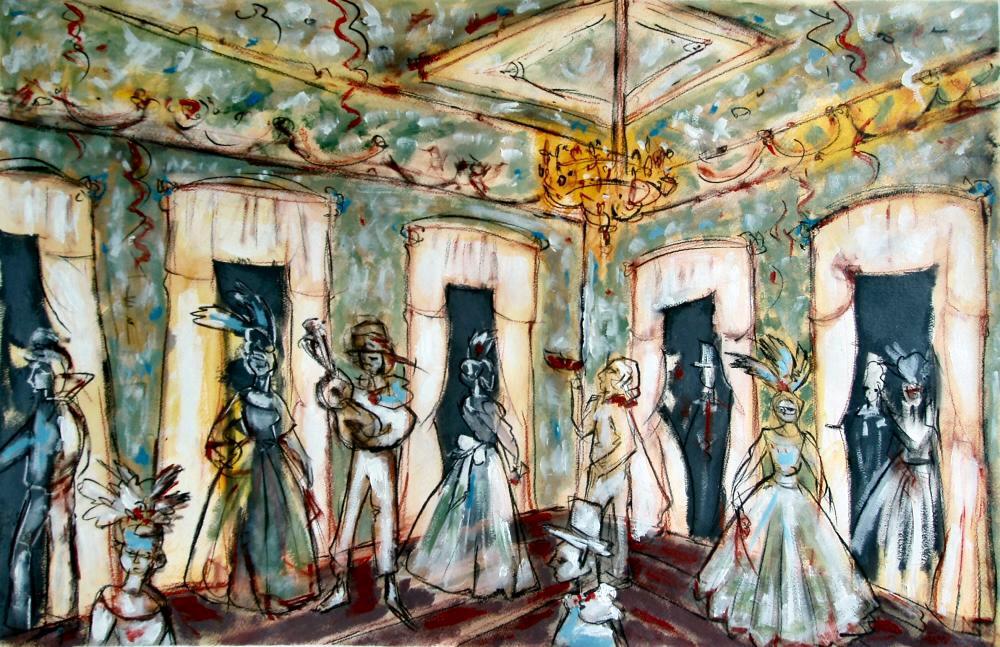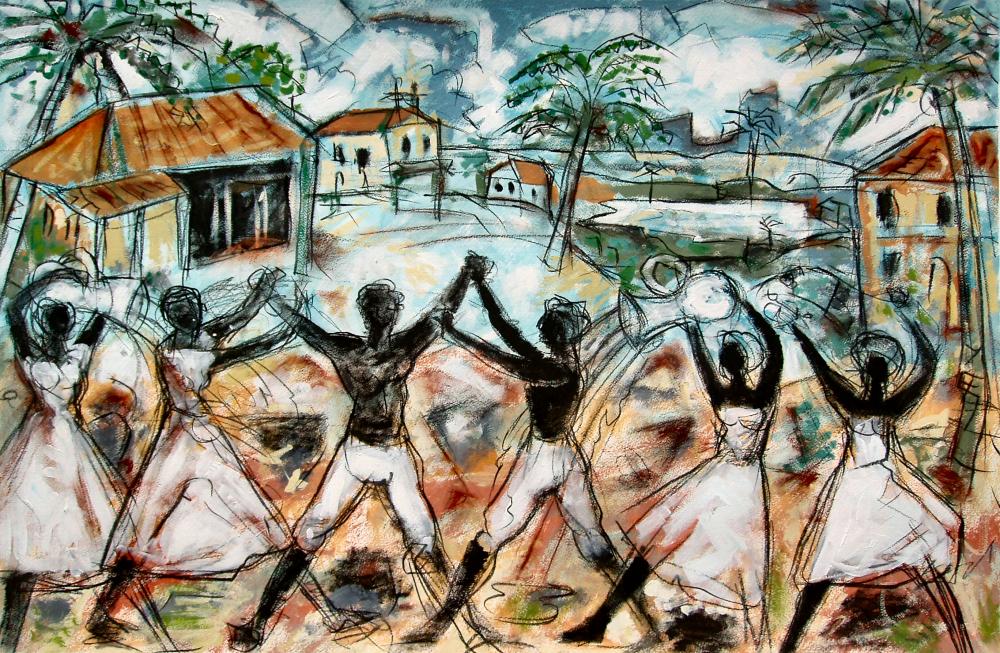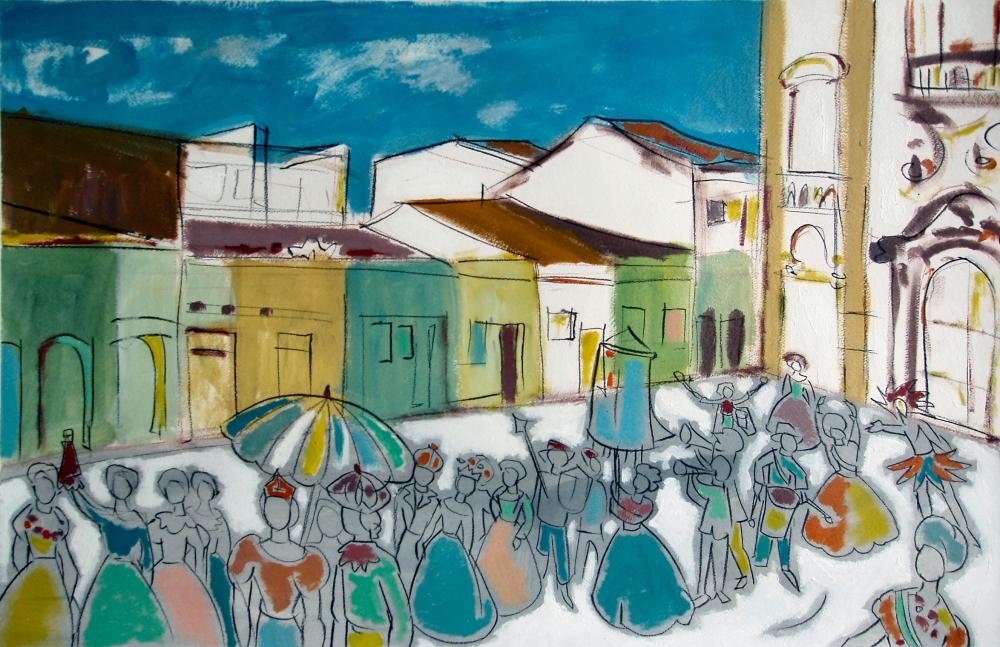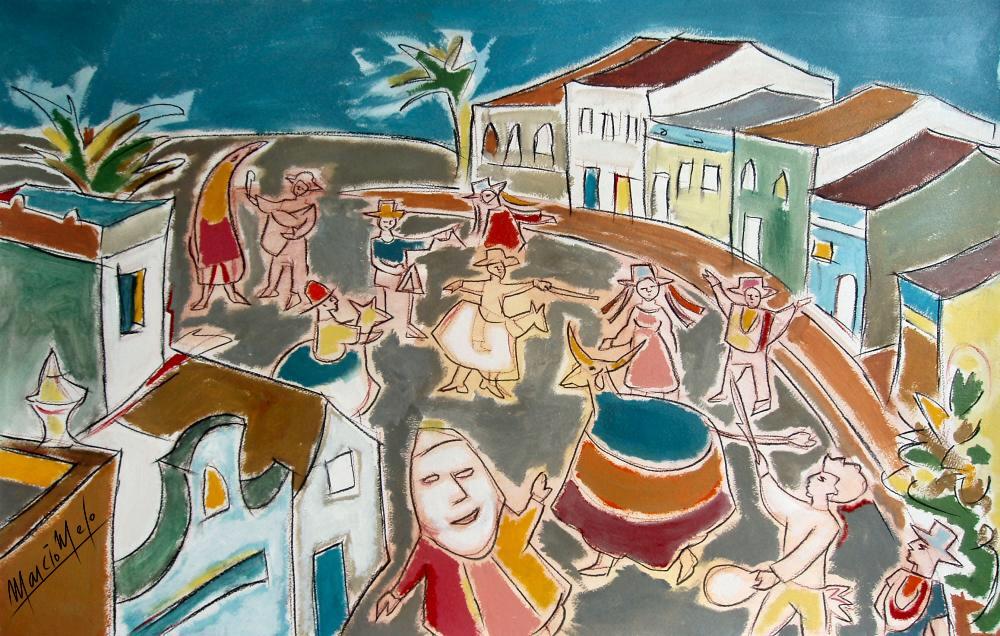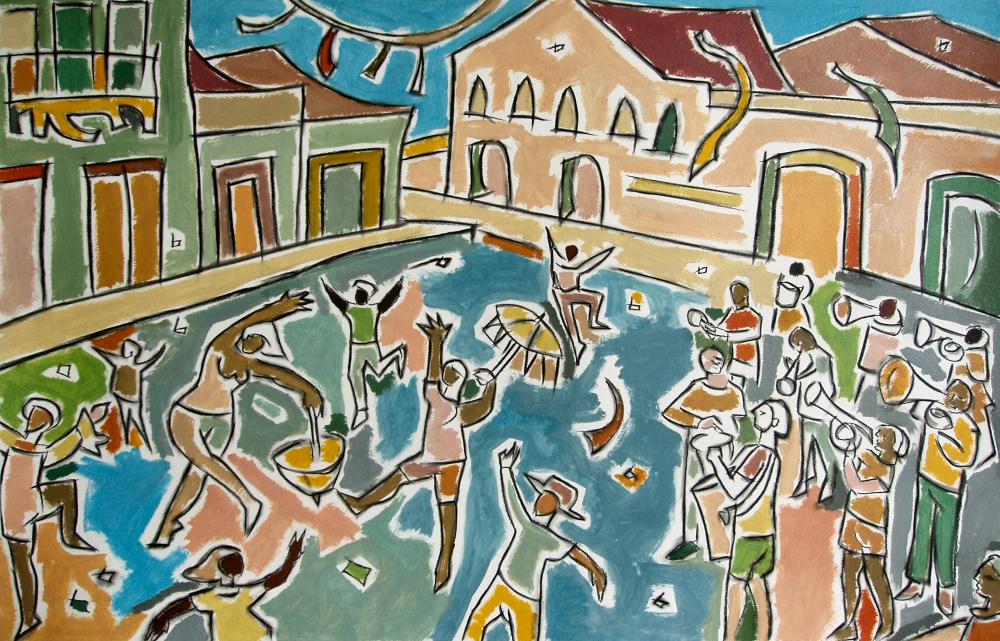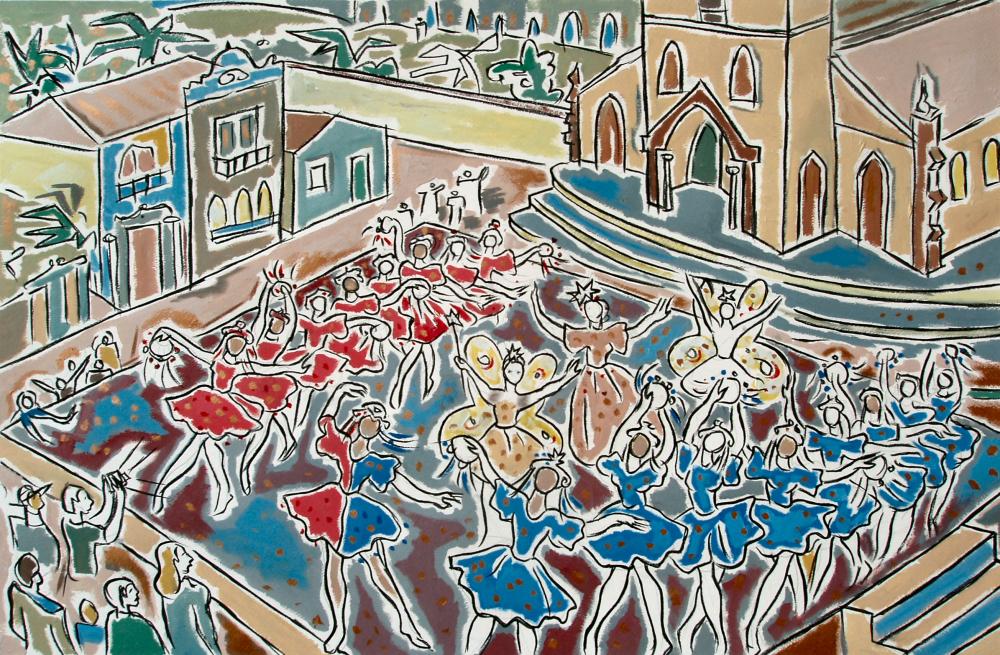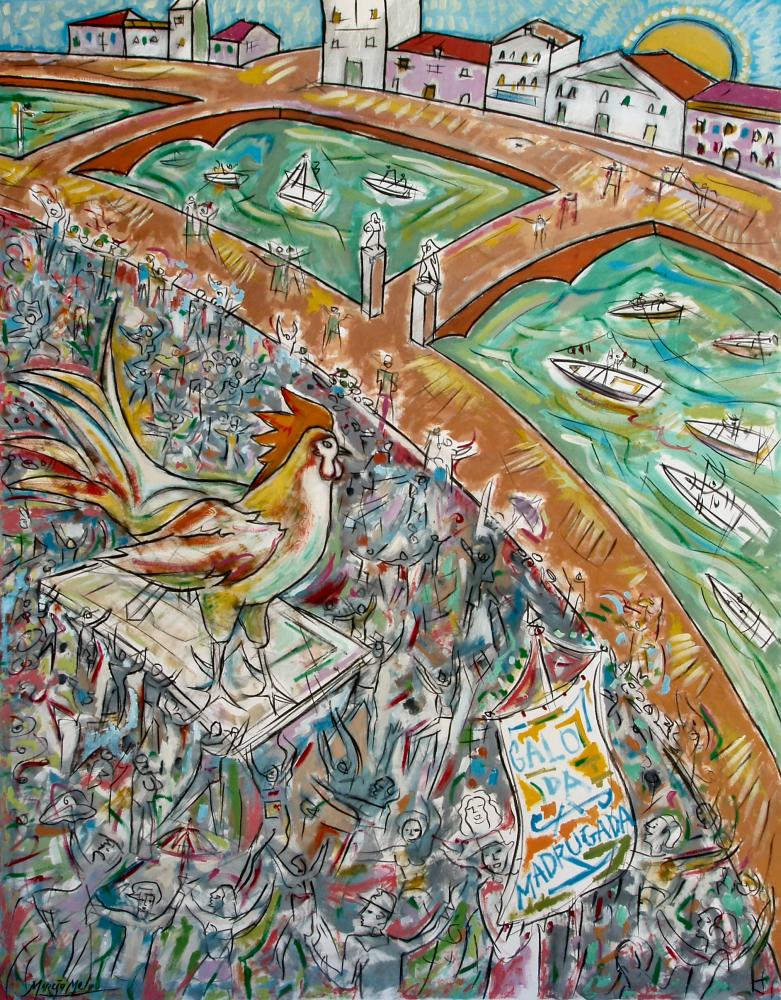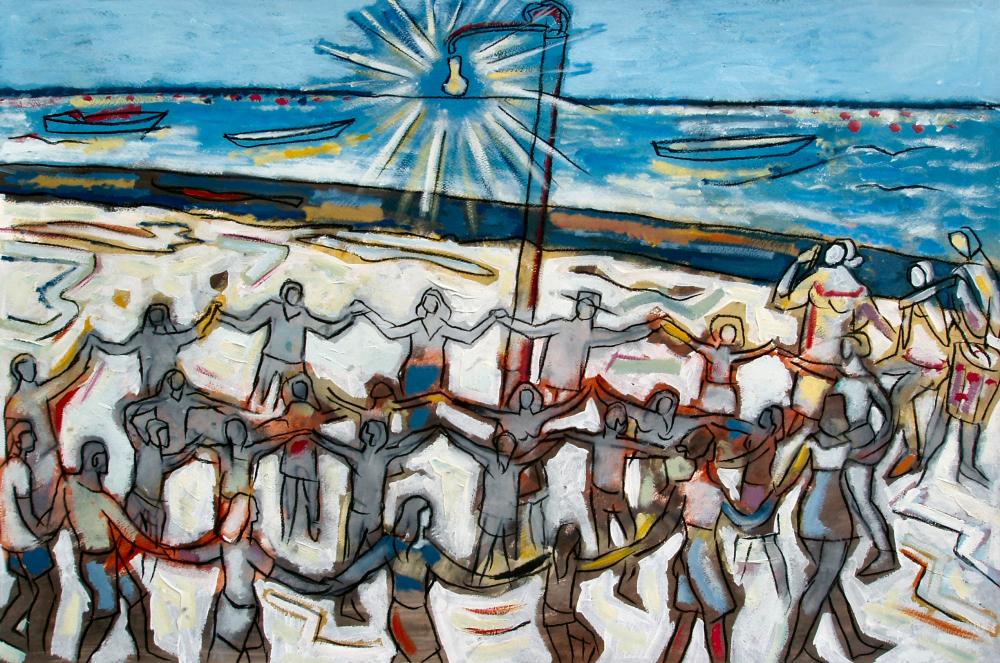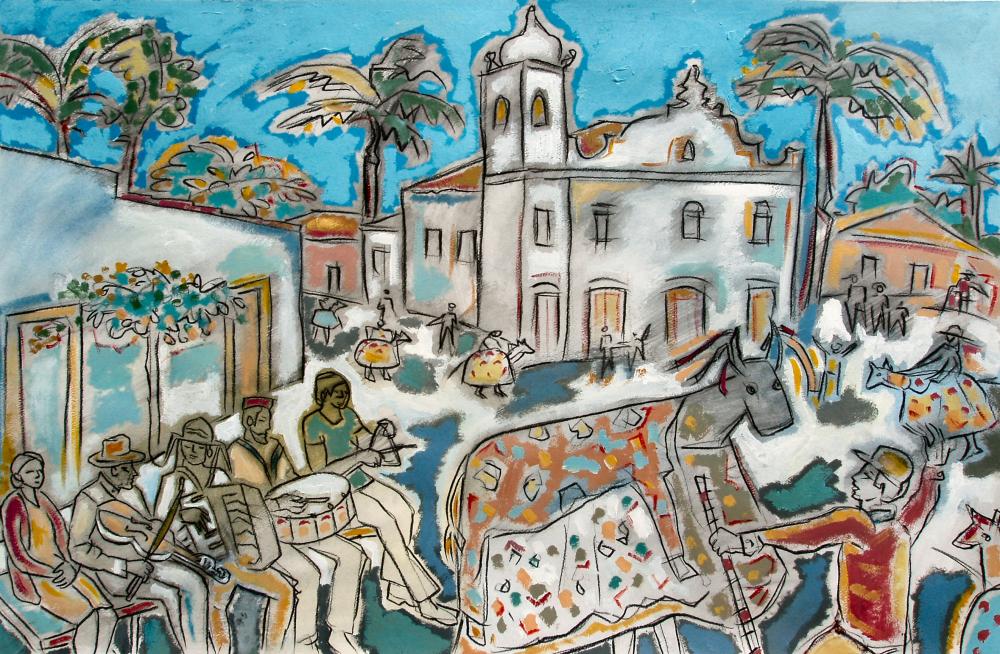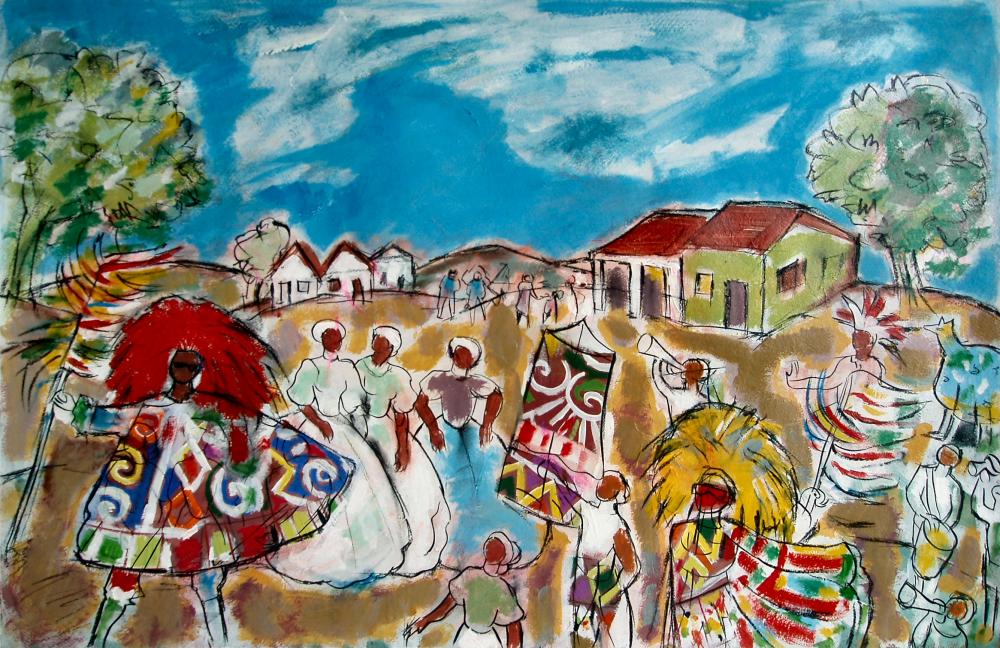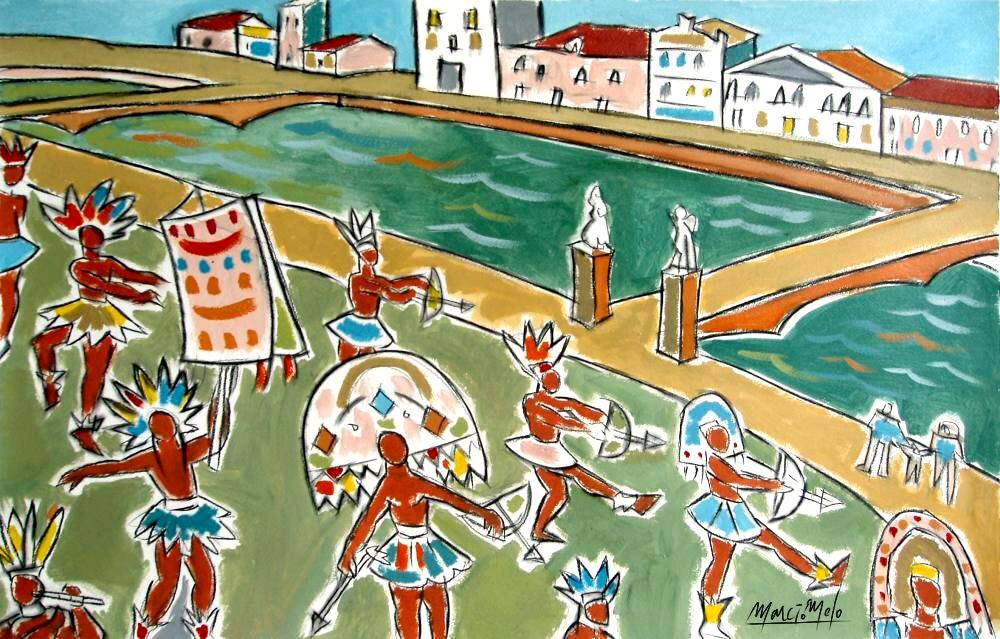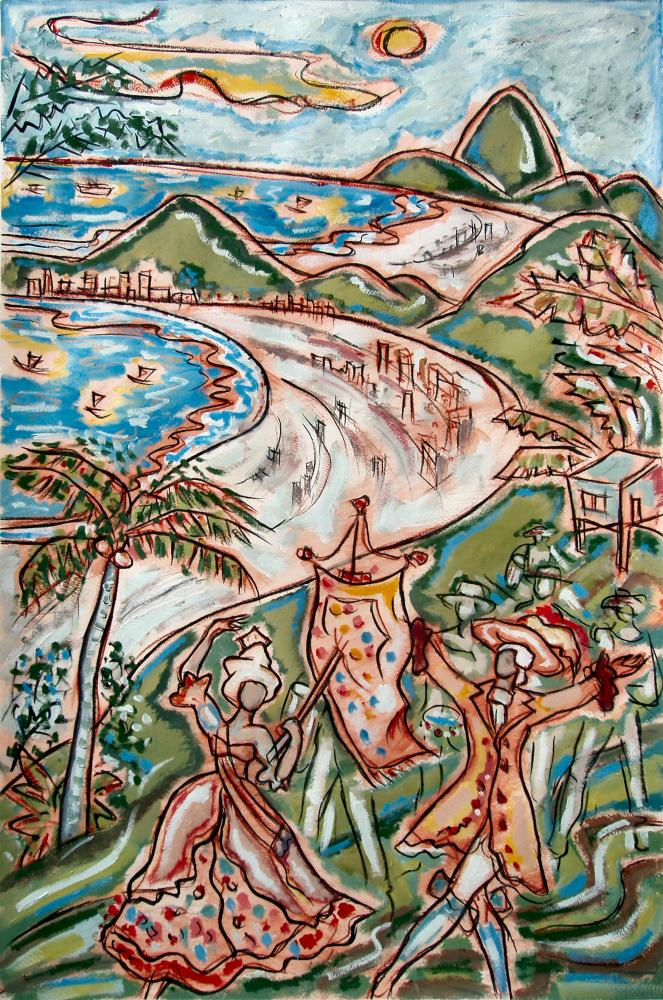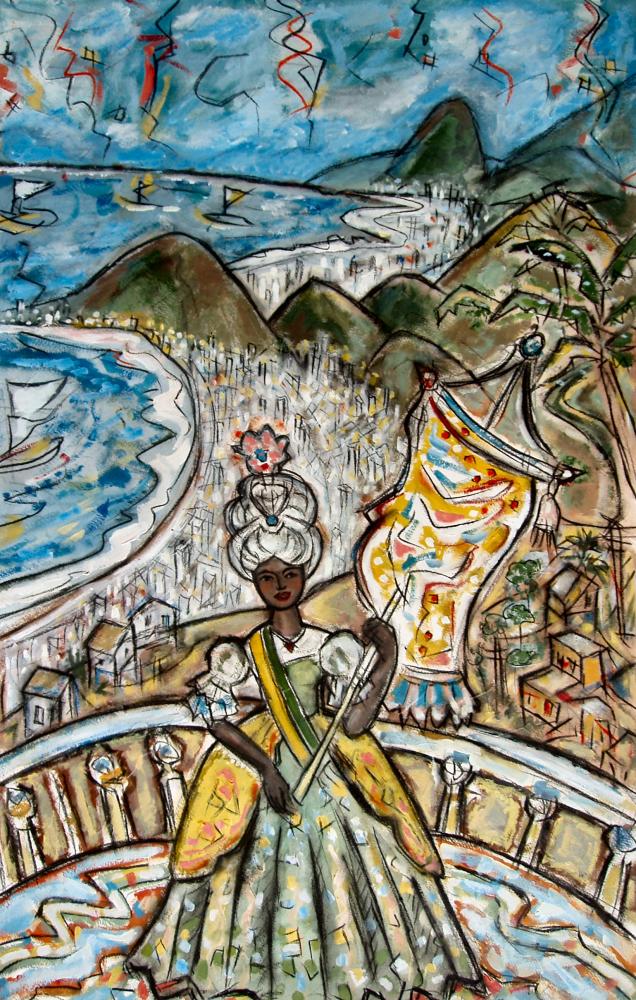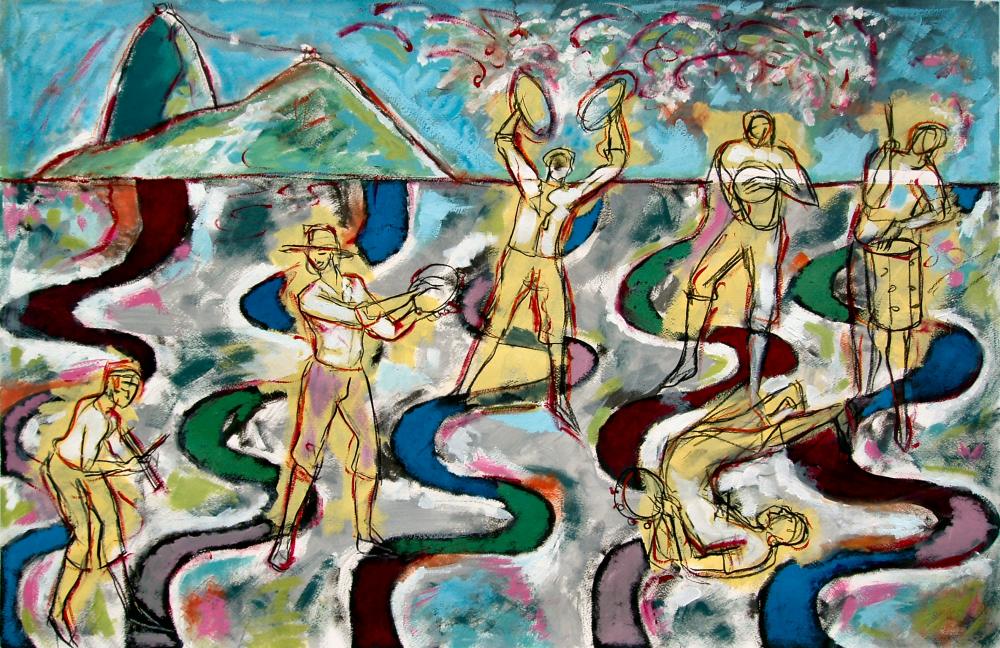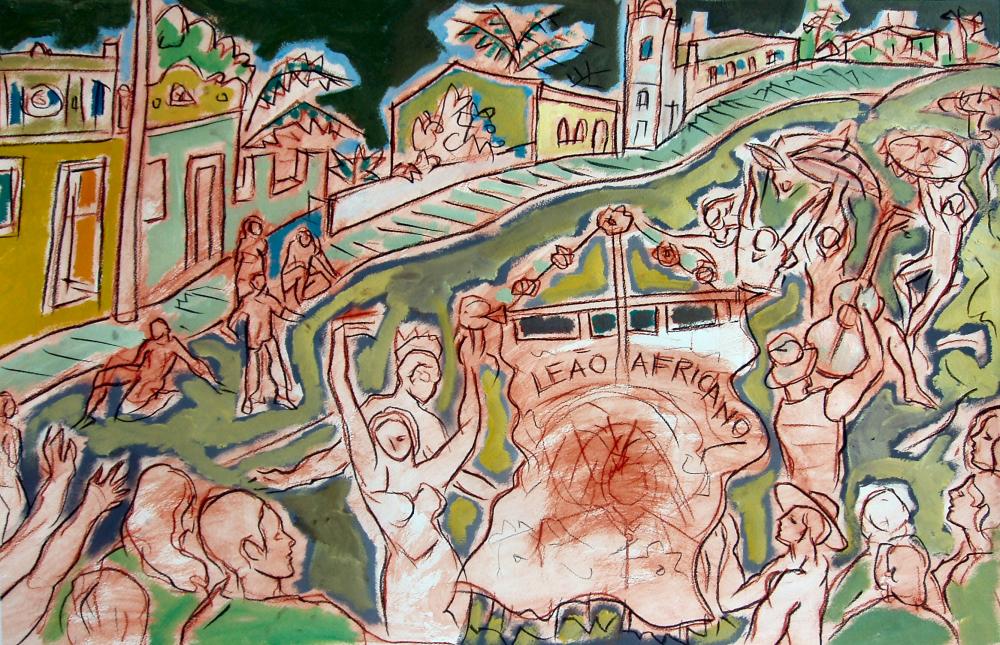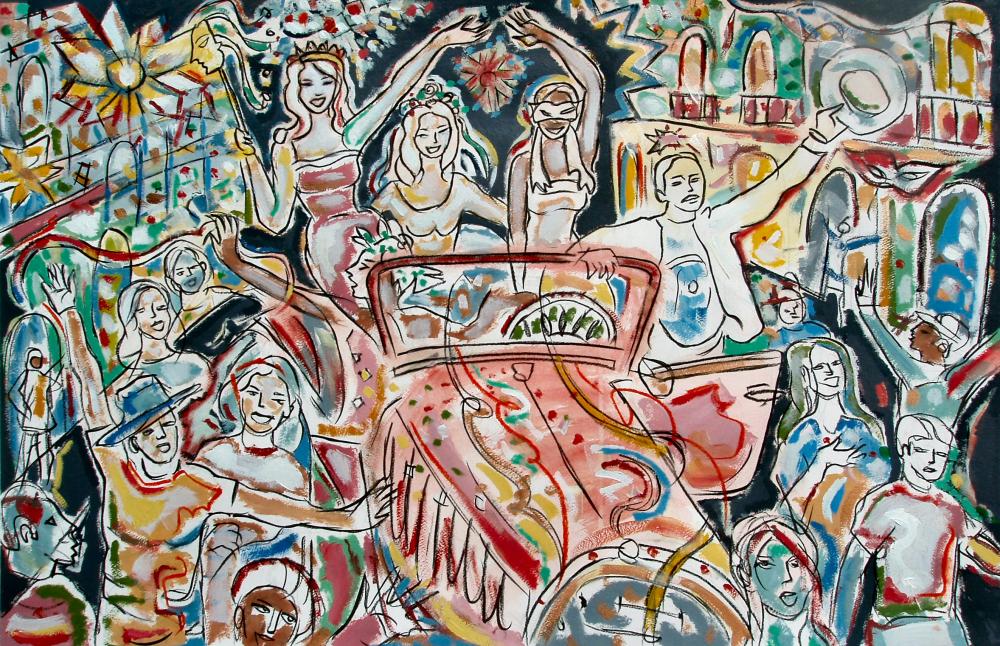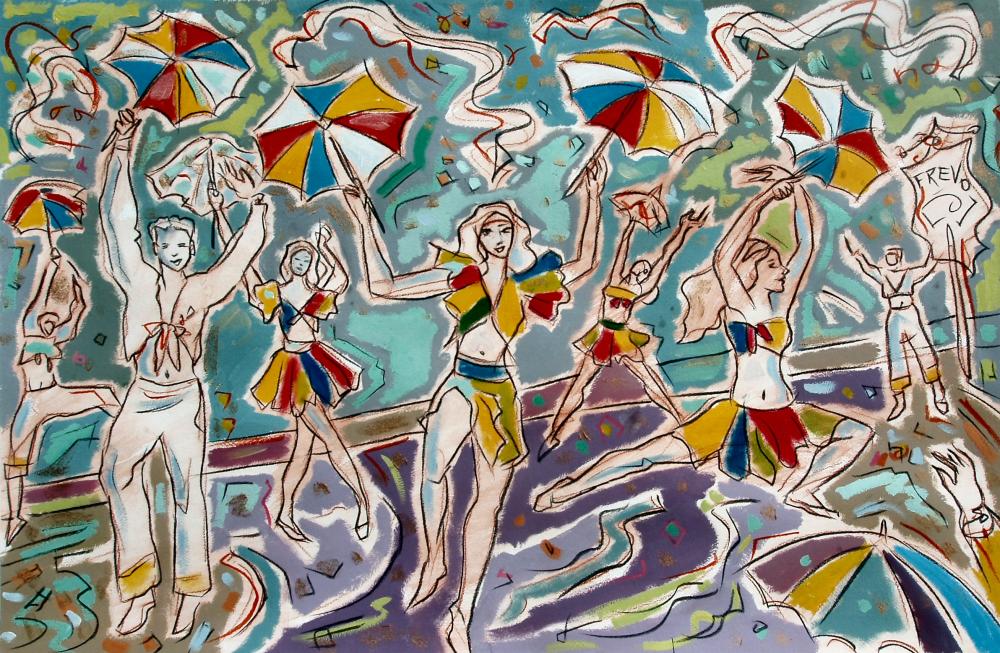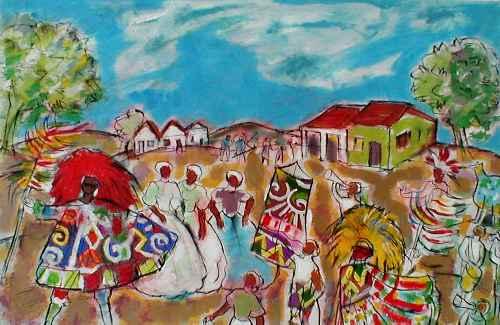
-
Alliance Française, Ottawa, Ontario
Under the auspices of the Year of Brazil in France, with the cooperation of the Brazilian Embassy of Canada.
Imagine Brazil
An exhibition of paintings about Brazil and its Carnival by
Marcio Melo
at Alliance Française 352 MacLaren Street, Ottawa, Ontario
August 22 - September 6, 2005
Vernissage: Thursday, August 25, 6 pm to 8 pm
As a Brazilian artist living in Canada, I have these two rich national resources contributing to my artistic inspiration. At home I live and work in a microcosm of the Canadian wilderness guided by the forces of nature and the constant changing of the four distinct seasons. From Brazil I draw on the rich culture of its folklore and traditions, inspired by the history, the experiences and memories of the time when I lived there. A school mural project at Ecole Poupore in Fort Coulonge (Quebec) inspired me to delve deeper into the Carnival in Brazil, and put some history to the traditions we enjoyed as children in the streets of Recife and Olinda. Inspired by what I learned and wanting to pass it on to the students, I created a series of paintings outlining the history of Carnival in Brazil. I was impressed with the interest it aroused in everyone, Brazilians and non-Brazilians alike, and it motivated me to explore further the magic of Brazil and its Carnival."
Marcio Melo 2005
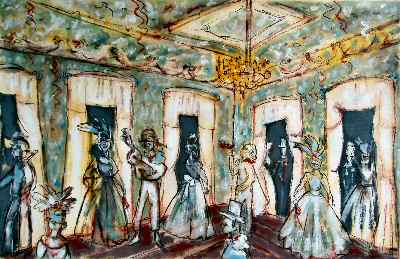
ORIGIN OF THE CARNIVAL IN RIO In 1840, the wife of an Italian ambassador in Rio de Janeiro held the first Carnival Ball. Invitations, musicians, confetti and streamers. Masked Ball. As a consequence of these events, the old street Carnival of Rio weakens. Today, Rio has the largest Carnival in the world, parades of Samba Schools with five thousand participants, historical, celebrity and literary themes, richly decorated floats and exuberance.
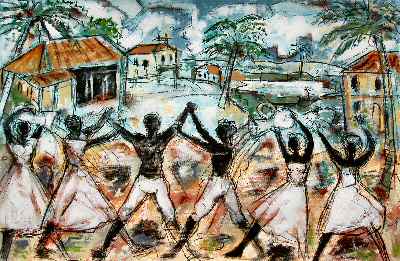
THE BRAZILIAN CARNIVAL AND ITS ORIGINS (THE ENTRUDO) In the beginning it was a spring celebration of the Greeks and Romans. In the Middle Ages the Catholic Church prohibited these pagan rituals with no success. European nations (France, Spain and Portugal) brought the tradition of the Carnival to the Americas. The entrudo arrived with the Portuguese. Water, flour and powder were the joy of everyone. Slaves would amuse themselves for three consecutive days.
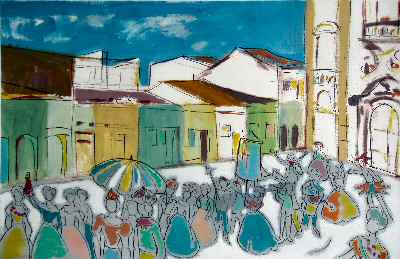
MARACATÚ WITH A STEADY BEAT In the colonial times, it was a homage to the royalty of the Congo, their election and their coronation. It was theatre by the blacks with it’s own music and dance. Today it takes the form of a parade of the court. The members of the court appear in order of importance. They sing songs of religious and profane origin. It is called Maracatú Nation in the urban region of Recife. They worship the calunga, a doll symbolizing an African divinity. Songs are accompanied by percussion instruments. Entrance order: Ladies of the court (carrying the calunga), the king and queen under the umbrella, maids of honour, prince and princess, minister, ambassador, duke and duchess, councilor, soldiers, vassals, Baianas, standard carrier, trumpeters, secretaries, drummers, feathered cabloclos, keeper of the crown.
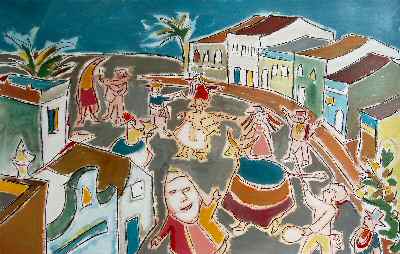
BUMBA-MEU-BOI Originated from the time when beef drove the economy. Satirizes the power of the farmers and plantation owners. The word bumba comes from zabumba (drum). It celebrates the death and resurrection of a bull. The animal is divided among the participants according to their importance and level of respect in the community. The tongue, the best part; the horn, the worst. The main characters are: the Captain, the Policeman, the Tax Collector, the Mateus, the Bastião, the Catirina and the Singing Lady.
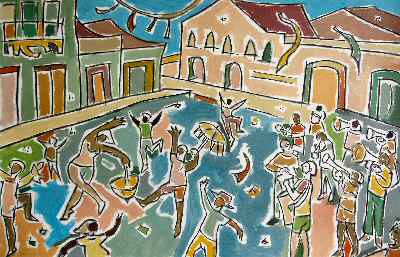
ORIGIN OF FREVO Battles between musical bands, free slaves would dance with sticks or umbrellas to defend themselves. Frevo is music and also dance, Frevo comes from “fervura”(fervour), effervescence, agitation. The music has a fast beat, vigorous and strident execution. Mixture of polka, maxixe, march, square dance and Brazilian tango. Frevo has three styles - street, song and march. There are 120 registered Frevo steps.

THE PASTORIL IN THE CASA FORTE SQUARE Its origins are connected to the Nativity scene of the European Middle Ages, when it used to be displayed inside or in front of the churches. It came to Brazil with the first Portuguese colonists when it acquired new dramatic aspects. It’s formed of two lines of little shepherdesses, the Red (lead by the Master) and the Blue (led by his opponent). Participants are: the angels, the Butterfly, the Morning Star, the Star of Bethlehem and Diana in the centre (who is neither part of the Red or the Blue).
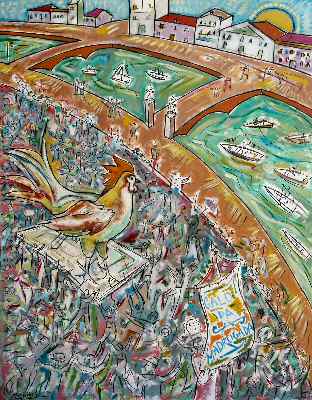
THE ROOSTER OF THE DAWN It is the largest street concentration of people in the world for a single cultural event, listed as such in the Guinness Book of Records. It attracts a multitude of over one million partyers.
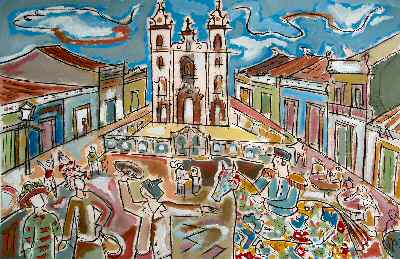
THE CAVALO-MARINHO A variation of Bumba-meu-boi with its own particular characteristics. It is found in the “zona da mata” area of Pernambuco and Paraíba. Participants are exclusively male and as a rule, masked. The orchestra is composed of a fiddler, tambourine, reco-reco and ganzá. The captain, the central character, symbolizes the landowners of the region. The captain and the horse are united in one single costume.
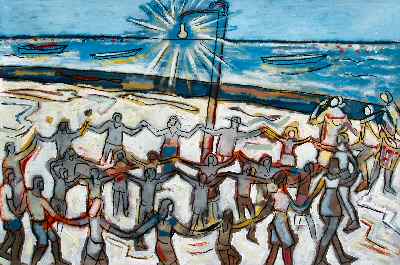
THE CIRANDA OF ITAMARACÁ A mixture of song and dance, play and diversion, led by the Ciranda Master (the central figure). Themes relate to Love, Politics, Soccer and Nature. Themes flow in a random manner. In the centre or on the side of the circle, apart from the Master with his ganzá, other musicians play specialized instruments. The zabumba (drum) and the tarol, trombones, clarinets, saxophones and pistons.
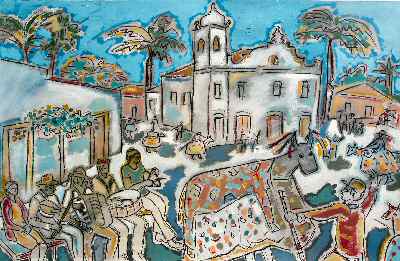
BUMBA-MEU-BOI OF TRACUNHAÉM Celebrated at Christmastime, it reappears for Carnival, transformed and redressed in special colours and different choreography. In Pernambuco there are a great number of Bumba-meu-Boi’s, especially in the “zona da mata” area of metropolitan Recife. The main ones are Bull of Batista, the Spotted Bull, The Star Bull, the Stubborn Bull and the Hillbilly Bull of Master Salustiano.
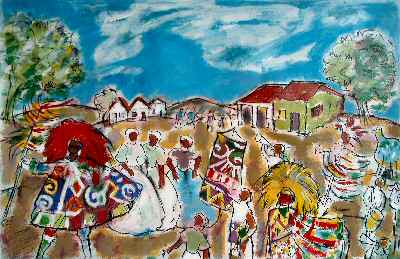
MARACATÚ WITH A LOOSE BEAT A fusion of several popular amusements of the sugar cane region of Pernambuco. Few resources; beautiful costumes. Percussion and wind instruments. The rhythm is similar to the Xangô beat of the Bahian Camdomblé. The main characters: The Master, the Mateus, the Catirina, the Baianas, the ladies of the court, the flag carriers, the donkey, the hunters, the feathered caboclos, the caboclos with a spear (wearing a wig of cellophane paper, a carnation in his teeth).
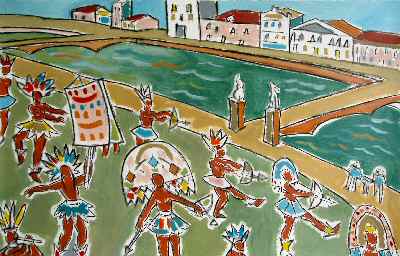
CABOCLINHOS Fast and light dance symbolizing battle, hunting and harvest. Music played on flutes, drums and maracas. The sound of a bow-and-arrow instrument marks the rhythm. Individual or group dance requiring excellent physical shape, kneeling, jumping up in circles. Clothed in feathers, headdresses, skirts, necklaces of emu, peacock and ostrich feathers, small gourds tied to their waists.
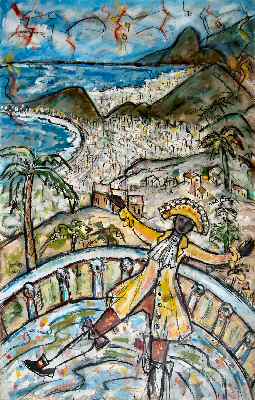
THE SAMBA SCHOOLS OF RIO DE JANEIRO (THE MESTRE-SALA) The parade starts with the abre-alas (a banner or sign greeting the people and asking permission to pass). After come the directors of the school. All with identical clothing. The women (pastoras) perform choreography. This is followed by the band of percussion instruments (the bateria), the baton twirler and the standard carrier. The rest of the school is divided into small groups - the alas.
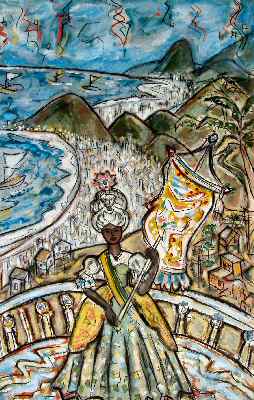
THE SAMBA SCHOOLS OF RIO DE JANEIRO (STANDARD CARRIER) The major celebration of the Carnival in Rio. The Samba schools descend the hills, singing and dancing in the streets. The Samba narrates stories of historical events, important people and facts of the Brazilian culture, praising its richness.

THE FIRST SAMBA SCHOOLS The first Samba school appeared in the district of Estácio in 1928. Composers, musicians and dancers got together to form a parade. Women dressed as Baianas. Men wore colourful clothing, striped shirts and straw hats. Only in 1952 did the schools start to organize themselves. They became civil associations with headquarters and regulations.
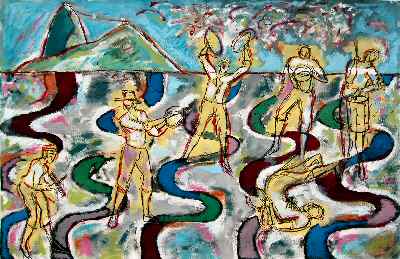
SAMBA SCHOOLS (MUSICIANS ON THE SIDEWALK) The schools are divided in categories. The first category parade in President Vargas Avenue. The second in Rio Branco Avenue and the third in the square, Praça Onze. The most famous schools are: Estação Primeira (Mangueira), Portela, Império Serrano, Acadêmicos do Salgueiro, Unidos de Lucas, Imperatriz Leopoldinense, Unidos de Vila Izabel, Mocidade Independente de Padre Miguel and Unidos de Padre Miguel.
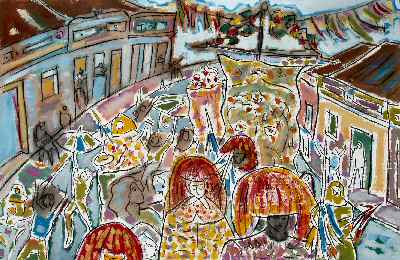
BLOCK OF CABOCLOS WITH SPEARS IN OLINDA The caboclo with a spear is the greatest symbol of the rural Maracatú. Its costume is composed of a cellophane paper wig, mainly of red and yellow, a coloured scarf covering his forehead, trousers and shirts made of chitão, long stockings and canvas shoes. The face is painted with urucum (a natural dye) and almost always wears mirrored dark glasses. He has a carnation between his teeth. The high point of the costume is the collar, richly embroidered with little mirrors and sequins. The collar is used over a pouch covered with bells and rattles that make a loud and primitive sound.

THE CARNIVAL OF OLINDA (STREET BLOCKS) The city of Olinda, with its hilly streets and views of the sea, makes a perfect scenario for an intense and varied Carnival where traditional Blocks mix with excited partiers. Frevo, Maracatú, Caboclinhos and Giant Puppets parade non-stop in the city, where Carnival is synonymous with spontaneity.
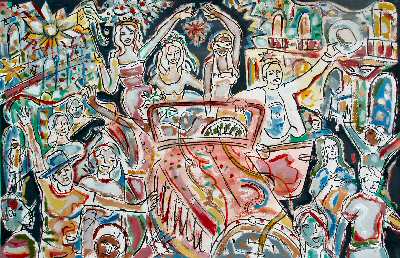
THE CORSO A long parade of open cars, with young men and women armed with perfumed water pistols, confetti and streamers. It was a noisy parade, with no mufflers. When they met, they threw at their adversaries kilos of confetti, rolls of streamers and perfumed water while they sang popular Carnival songs. With the passing of time, the perfumed water was replaced by lança-perfume and the confetti and streamers went out of fashion.
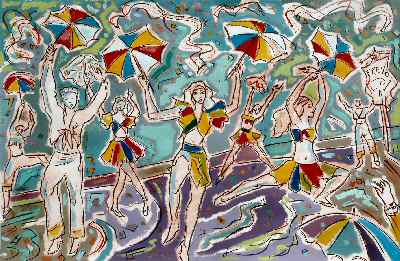
THE PERNAMBUCO FREVO Frevo comes from “fervura” (fervour), effervescence, agitation. The first reference appeared in the “Jornal Pequeno”, in the edition of February 9, 1907, now celebrated as Frevo Day. The Frevo steps that are characterized by a great freedom of movement, were improvised rather than derived from other existing choreography, which lends it a particular style. There are 120 identified steps. Some of them are famous and known today as the Big Scissor, the Saw, the Dry Leaf, the Carrousel, the Rojão, the Tip of the Foot and the Heel, the Go-but-doesn’t-go, etc…
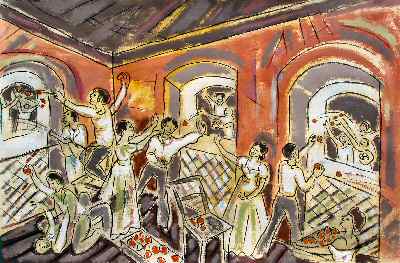
ORIGINS OF CARNIVAL (THE ENTRUDO) Originally a European celebration, brought to Brazil by the Portuguese. Playing with water, flour and powder. The slaves lived the illusion of being free for three days without having to look for the opportunity to escape. Farmers, labourers, whites and blacks enjoying themselves. With time, the Carnival was prohibited in certain cities. It was intended to transform it into a celebration for the elite. In 1840, Rio de Janeiro held its first Carnival Ball.
